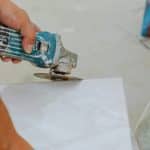In the ever-evolving world of construction and infrastructure, self-healing concrete has emerged as a promising material offering a sustainable solution to a perennial problem. This intriguing concept of ‘healing’ isn’t drawn from medical science but from the dynamic field of civil engineering. The idea is to utilize certain inherent properties of construction materials, specifically concrete, to repair any cracks that might develop due to various factors, enhancing the durability and longevity of the structures. In this article, we’ll delve into the progress made in the arena of self-healing concrete, its mechanism, and the potential it holds for the future of construction.
The Mechanism Behind Self-Healing Concrete
Before unravelling the progress made in the sphere of self-healing concrete, it is essential to understand what this innovation entails.
Sujet a lire : What’s the Future of Ultracapacitors in Energy Storage Systems?
Self-healing concrete, as the name suggests, is a type of concrete that has the ability to repair itself when it develops cracks. This rejuvenation process is not a matter of magic, but rather a scientifically engineered process. The secret behind the self-healing ability of this concrete is a strain of bacteria, specifically Bacillus pseudofirmus or Sporosarcina pasteurii, embedded within the concrete mix at the time of construction.
When a crack appears on the concrete surface, the dormant bacteria are exposed to air and water. This exposure triggers the bacteria to germinate, grow, and start a chemical reaction leading to the production of limestone. This limestone fills up the crack, restoring the concrete’s strength and durability.
Sujet a lire : How Is Collaborative Robotics Changing the Dynamic of the Manufacturing Floor?
In effect, the bacteria serve as a healing agent, responding to the presence of water and air to mend the cracks before they can compromise the integrity of the structure. The activation of bacteria and the subsequent healing process is a testament to the great strides made in the field of construction materials.
The Evolution and Performance of Self-Healing Concrete
The journey of self-healing concrete from a promising concept to a viable construction material has been marked by significant advancements.
The initial experiments involved infusing small capsules of healing agent into the cementitious material. However, the drawback was that the capsules could only heal small cracks, and their effectiveness diminished over time. The breakthrough came with the introduction of bacteria-based self-healing concrete. By embedding bacteria within the concrete mix, researchers were able to achieve a more durable, efficient, and long-lasting solution.
The performance of self-healing concrete in terms of strength and durability is commendable. According to a research published on Crossref, the healed concrete displayed strength recovery of up to 100% in some cases, demonstrating the material’s potential in substantially enhancing the lifespan of structures.
Durability and Sustainability Aspect of Self-Healing Concrete
The increased durability of structures built with self-healing concrete directly contributes to their sustainability.
In the traditional scenario, the appearance of cracks in concrete would necessitate repair work, involving considerable labor, materials, and finances. This not only increased the cost of maintenance but also had a negative impact on the environment due to the carbon emissions associated with the repair work.
On the other hand, self-healing concrete reduces the need for maintenance and repair, thereby reducing the associated costs and carbon footprint. Furthermore, the bacteria used in the concrete are naturally occurring and non-pathogenic, making this a green and eco-friendly solution.
Moreover, the limestone produced by the bacteria during the healing process further strengthens the structure, enhancing its durability. In this way, self-healing concrete also contributes to resource conservation by extending the life of structures and reducing the need for new construction.
The Future of Self-Healing Concrete
Looking ahead, self-healing concrete holds immense promise for the construction industry.
While the current applications of self-healing concrete primarily revolve around infrastructural projects such as buildings, bridges, and roads, the potential applications are manifold. For instance, it could be used in marine structures that are constantly exposed to corrosive seawater. The self-healing nature of the concrete could help protect such structures from damage, ultimately enhancing their longevity.
Moreover, with further advancements and refinement, the efficiency of the self-healing process could be improved. The researchers are also exploring the possibility of using different strains of bacteria and other types of healing agents to enhance the performance of self-healing concrete.
In conclusion, the progress in self-healing concrete exemplifies the power of scientific innovation in shaping the future of construction. By leveraging the inherent properties of construction materials and the power of bacteria, we have paved the way for a more sustainable, cost-effective, and resilient approach to construction. This is not the end but just the beginning of the journey of self-healing concrete towards a more sustainable future.
Implications of Self-Healing Concrete in the Construction Industry
Let’s take a closer look at how self-healing concrete could revolutionize the construction industry.
As already mentioned, self-healing concrete holds the potential to significantly enhance the durability and longevity of concrete structures. The ability of this innovative material to repair itself reduces the need for regular maintenance and repair works, which are often time-consuming, costly, and environmentally harmful.
What’s more, self-healing concrete is not just about repairing visible cracks. Even the tiniest, almost invisible cracks can pose a serious threat to the structural integrity of a building. By healing these micro-cracks, the self-healing concrete can help avoid catastrophic failures that could occur from untreated damage.
In addition to its structural advantages, self-healing concrete also has several environmental benefits. The production of ordinary concrete is a significant contributor to greenhouse gas emissions. The use of self-healing concrete can potentially reduce these emissions by prolonging the lifespan of structures and reducing the need for new construction. This is a crucial advantage in an era where sustainable and green practices are of paramount importance.
Moreover, the bacteria used in self-healing concrete are naturally occurring, non-pathogenic, and do not pose any environmental or health risks. This positions self-healing concrete as a green and eco-friendly construction material, in line with the growing demand for sustainable building practices.
Conclusion – The Road Ahead for Self-Healing Concrete
Let’s wrap up our discussion on self-healing concrete by considering its future prospects.
The journey of self-healing concrete, from its conceptualization to its current stage, has been marked by significant advancements and achievements. There’s no denying the potential it holds for the construction industry and the wider push towards sustainability. However, it is also important to note that this technology is still in its early stages.
Further research and development are needed to perfect the self-healing mechanism and optimize the performance of the healing agents. The cost of implementing self-healing concrete on a large scale is another area that needs to be addressed. Despite these challenges, the progress made so far is encouraging, and the future of self-healing concrete looks promising.
In the grand scheme of things, self-healing concrete is more than just a construction material. It is a testament to human ingenuity and our ability to harness nature’s capabilities to create sustainable solutions. As we continue to face the challenges of climate change and environmental degradation, innovations like self-healing concrete serve as a beacon of hope for a more sustainable and resilient future.
In conclusion, the progress made in self-healing concrete is a significant leap forward in the quest for sustainable construction practices. As we continue to refine this technology, we are not only building stronger and more resilient structures but also paving the way towards a more sustainable future.






